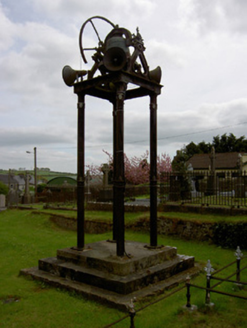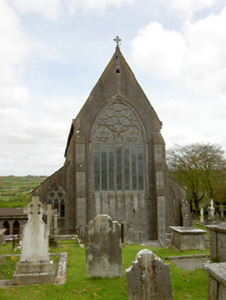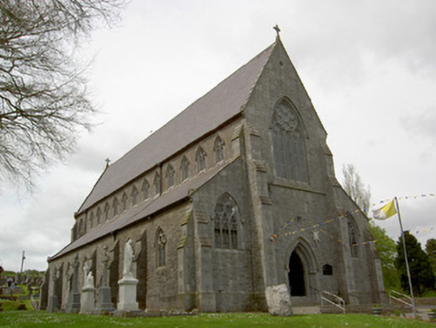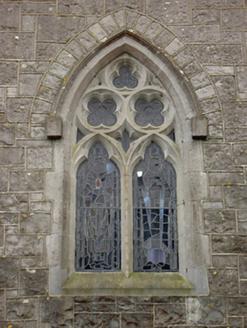Survey Data
Reg No
22103005
Rating
Regional
Categories of Special Interest
Architectural, Artistic, Social, Technical
Original Use
Church/chapel
In Use As
Church/chapel
Date
1855 - 1865
Coordinates
222087, 146416
Date Recorded
04/05/2005
Date Updated
--/--/--
Description
Detached east-facing gable-fronted Catholic church, built c.1860, with six-bay side aisles with clerestorey over, single-bay chancel, and with twentieth-century sacristy to north. Pitched slate roofs with limestone cross finials, cast-iron rainwater goods and cut limestone eaves course and copings. Snecked roughly-dressed limestone walls with plinth, stepped limestone buttresses, and with string course to gable front. Pointed-arch window openings, double-light to side walls, triple and five-light to gable-front and seven-light to chancel, all with carved limestone tracery, hood-mouldings and stained glass. Pointed order-arch main door opening with engaged colonettes and hood-moulding, with timber battened double-leaf door. Pointed-arch door openings to north and south elevations, latter now window, with timber battened doors under hood-mouldings. Timber coffered ceiling to interior and clustered limestone columns to arcade separating nave and side aisles, and with elaborate sculpted marble reredos to altar. Cast-iron belfry to southwest and flights of limestone steps leading up to front of church. Snecked and cut limestone boundary walls and piers to site with cast-iron railings and gates.
Appraisal
Located in a prominent and dominant position overlooking the street below and reached by a tall flight of steps, this church is typical of Gothic Revival-style Catholic churches. It was designed by J.J. McCarthy, the famous architect of many such churches of the later nineteenth century. This building is notably intact. The very fine interior boasts fine colonnades of clustered columns to the side aisles, a fine series of stained-glass windows, some by Harry Clarke or his studios and a particularly splendid sculpted reredos. However, the highlight of the building is undoubtedly the dramatic seven-light altar window, the largest to be made since the Reformation of the mid-sixteenth century. The pulpit was sculpted or installed by Patrick and Willie Pearse, leaders of the 1916 Rising.







